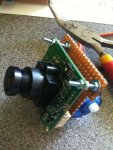@ZOR
I'm using one of these:
http://nipponpulse.com/catalog/parts/search/motors-rotary-tin-can-steppers/part_id:218
('Cos I've got one in the toybox
Wiring and sequencing follows both M.3, p. 15 and, in parallel,
http://nipponpulse.com/catalog/document/4b16d0783ef33_PF(C)_Unipolar_Wiring.pdf
AXE117 / 14M2
"My" code (derived from the Forum) works.
I simply added a 10k potentiometer (C.4 , gnd, v+).
Then I loaded the code provided by Goeytex.
That worked as well.
You're spoilt for choice mate!
e
I'm using one of these:
http://nipponpulse.com/catalog/parts/search/motors-rotary-tin-can-steppers/part_id:218
('Cos I've got one in the toybox
Wiring and sequencing follows both M.3, p. 15 and, in parallel,
http://nipponpulse.com/catalog/document/4b16d0783ef33_PF(C)_Unipolar_Wiring.pdf
AXE117 / 14M2
"My" code (derived from the Forum) works.
I simply added a 10k potentiometer (C.4 , gnd, v+).
Then I loaded the code provided by Goeytex.
That worked as well.
You're spoilt for choice mate!
e

